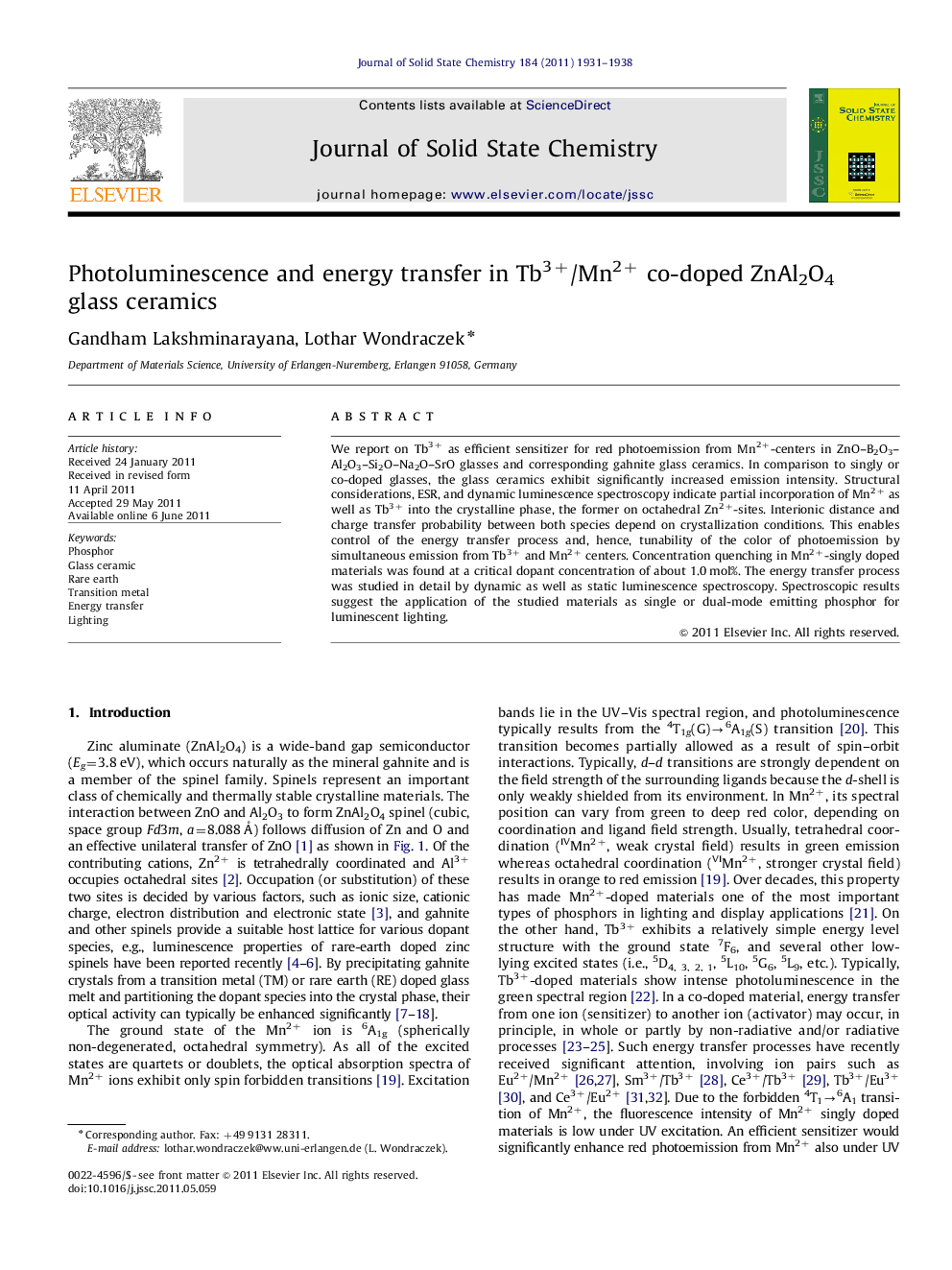| Article ID | Journal | Published Year | Pages | File Type |
|---|---|---|---|---|
| 1330678 | Journal of Solid State Chemistry | 2011 | 8 Pages |
We report on Tb3+ as efficient sensitizer for red photoemission from Mn2+-centers in ZnO–B2O3–Al2O3–Si2O–Na2O–SrO glasses and corresponding gahnite glass ceramics. In comparison to singly or co-doped glasses, the glass ceramics exhibit significantly increased emission intensity. Structural considerations, ESR, and dynamic luminescence spectroscopy indicate partial incorporation of Mn2+ as well as Tb3+ into the crystalline phase, the former on octahedral Zn2+-sites. Interionic distance and charge transfer probability between both species depend on crystallization conditions. This enables control of the energy transfer process and, hence, tunability of the color of photoemission by simultaneous emission from Tb3+ and Mn2+ centers. Concentration quenching in Mn2+-singly doped materials was found at a critical dopant concentration of about 1.0 mol%. The energy transfer process was studied in detail by dynamic as well as static luminescence spectroscopy. Spectroscopic results suggest the application of the studied materials as single or dual-mode emitting phosphor for luminescent lighting.
Graphical abstractIn the prepared Tb3+/Mn2+ codoped glass ceramics containing gahnite (ZnAl2O4) nanocrystals, the luminescence color is changed from green light to yellowish-red light with an increase in Mn2+ concentration due to enhanced energy transfer from Tb3+ to Mn2+ ions. This tunability should have potential applications in solid state lighting to produce white light, which can be obtained by appropriately optimizing the ratio of Tb3+/Mn2+ ions under UV(350 nm) excitation.Figure optionsDownload full-size imageDownload as PowerPoint slideHighlights► Photoluminescence from Mn2+ and Tb3+ singly and co-doped glasses and gahnite glass ceramics was studied. ► Occurrence of energy transfer from Tb3+ to Mn2+ was confirmed. ► Luminescence color tunability is achieved by varying dopant concentration and crystallization parameters.
